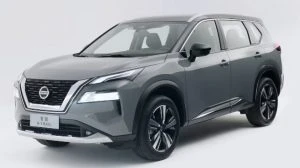Spot the Difference?

 Did you know that the Renault Koleos is very much a Nissan X-Trail? Were you also aware that the current BMW 7-Series is the platform for the new Rolls-Royce Dawn? These days car manufacturers are sharing a lot of the components that go into making a new vehicle. A lot of the electronic systems and computer chips are shared between makes and models, even engines and an entire body platform. As the costs of designing and building a complex new car rise, by getting together and pooling money, skills, assets, and sharing the costs of the new build, these are definitely clever ways for manufacturers to reduce their overheads, and the overall cost of designing and building a new vehicle.
Did you know that the Renault Koleos is very much a Nissan X-Trail? Were you also aware that the current BMW 7-Series is the platform for the new Rolls-Royce Dawn? These days car manufacturers are sharing a lot of the components that go into making a new vehicle. A lot of the electronic systems and computer chips are shared between makes and models, even engines and an entire body platform. As the costs of designing and building a complex new car rise, by getting together and pooling money, skills, assets, and sharing the costs of the new build, these are definitely clever ways for manufacturers to reduce their overheads, and the overall cost of designing and building a new vehicle.
Platform sharing between manufacturers and between models is, perhaps, more common than you may have thought; and particularly now more than ever. In some cases, the similarities between a particular car, truck, or ute and its platform-twin are obvious. However, at other times it’s not so easy to detect the resemblance.
A car’s platform is the base (including body shell, floor, and even some of the chassis and engine parts) on which it is built. Not only can these components be common to more than one manufacturer, but they can also be shared between models in a manufacturer’s line-up. The initial platform design and its production or engineering works can be shared across a number of different models. Kia and Hyundai are some of the best brands at doing this sort of thing, and so too is VW.
Sharing componentry between different manufacturers/brands has to be built on an existing good business relationship. So, when two or more automotive manufacturers with a good relationship have shared the same desire to save money, they can operate together and agree to share development costs and also essentially sell the same cars but under different badges. Renault and Nissan are great examples of this. Some of the most talked about illustrations of this occurring recently will have been the Toyota GT86 and the Subaru BRZ, which are essentially the same cars tarted up slightly differently. Also, the Toyota Corolla station wagon and the Suzuki Swace (a less known model here in Australia) are exactly the same car. Another illustration would be the awesome new Toyota Supra and BMW Z4 cars. Also, Volvo has platformed shared quite frequently over the years. The Global C-car Platform from Ford saw the Volvo S40 and V40 share much with the Ford Focus and Mazda 3. Well known Hyundai and Kia have utilized several duplications of platforms for their small automobile line-up since 1997.
Having a shared engineering platform, where manufacturers build a basic foundation that can be used across many of its own models is an advantage. The Volkswagen Group (VW), and the brands it owns, (Audi, Bentley, Lamborghini, Porsche, Seat and Skoda) are masters of this craft. VW has a common practice where they will build a smaller number of platforms, but the benefits come when they will then re-purpose these platforms across their own different brands. When VW designed and built the MQB (Modularer Querbaukasten) platform, it was shared across the Audi A3, Skoda Octavia, and Seat Leon. Also, one of its SUV platforms is shared and utilized by the Audi Q7 and Q8, the Bentley Bentayga, the Lamborghini Urus, and Porsche’s Cayenne.
BMW’s 7-Series is the platform for the immensely luxurious and expensive Rolls Royce Dawn. The new 7-Series is luxurious and sleek in its own right, but it is also much, much cheaper to buy – comparatively.
Some other new vehicles that are currently sharing platforms:
Cadillac CTS and Chevrolet Camaro
VW Polo and Skoda Scala
Mercedes Benz GLE and Jeep Grand Cherokee
Renault Koleos and Nissan X-Trail
Fiat 500 X and Jeep Renegade